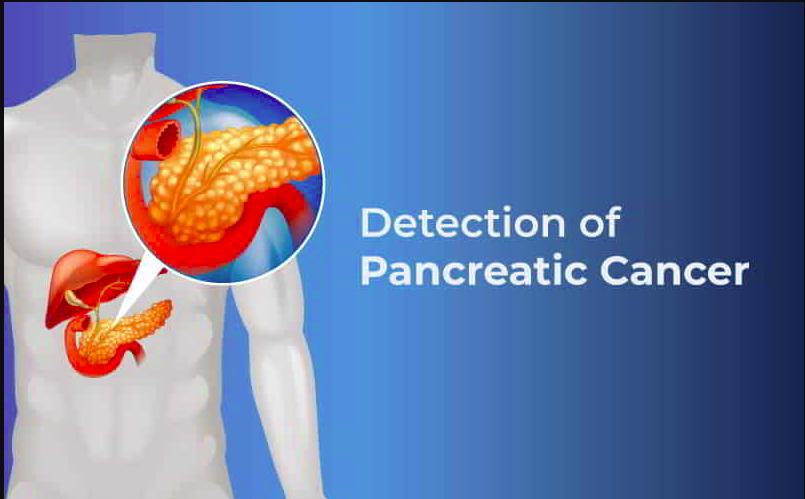Pancreatic cancer is one of the most challenging types of cancer to diagnose early. Because symptoms often appear in advanced stages, many patients wonder how to detect pancreatic cancer before it spreads. Early detection plays a crucial role in improving treatment outcomes and survival rates, making awareness of the signs and risk factors essential.
In this article, we will explore what pancreatic cancer is, its types, causes, and the symptoms to look out for. We will also discuss diagnostic methods, treatment options, prevention strategies, prognosis, and the latest research. Whether you are concerned about your health or seeking information for a loved one, understanding how to detect pancreatic cancer can make a significant difference.
Definition and Overview
Pancreatic cancer occurs when abnormal cells in the pancreas grow uncontrollably, forming tumors. The pancreas is an important organ located behind the stomach that helps regulate blood sugar and aids in digestion. Because the pancreas is deep inside the body, cancer often develops silently, making detection difficult until it reaches advanced stages.
Types of Pancreatic Cancer
There are two main types of pancreatic cancer:
- Exocrine tumors: The most common type, usually adenocarcinoma, starting in the ducts of the pancreas.
- Endocrine tumors (neuroendocrine tumors): Less common and often slower growing, affecting the hormone-producing cells of the pancreas.
Causes and Risk Factors
While the exact cause of pancreatic cancer is not always clear, several risk factors can increase the likelihood of developing it, including:
- Family history of pancreatic cancer
- Smoking and heavy alcohol use
- Chronic pancreatitis
- Obesity and poor diet
- Diabetes
- Age (most common in people over 60)
- Certain inherited genetic mutations
Symptoms and Early Warning Signs
One of the key steps in understanding how to detect pancreatic cancer is recognizing its symptoms. Common signs include:
- Jaundice (yellowing of the skin and eyes)
- Unexplained weight loss
- Abdominal or back pain
- Loss of appetite
- Nausea and vomiting
- Dark urine or pale stools
- Fatigue
Early warning signs are often subtle, so paying close attention to persistent or unusual changes in your body is critical.
Diagnosis
Detecting pancreatic cancer involves a combination of medical tests and imaging. Doctors may use:
- Blood tests: To check for tumor markers like CA 19-9.
- Imaging scans: CT scans, MRI, or endoscopic ultrasound to visualize tumors.
- Biopsy: Collecting tissue samples to confirm cancer.
- Genetic testing: To identify inherited risks in high-risk patients.
Treatment Options
Treatment depends on the stage and type of pancreatic cancer. Common options include:
- Surgery (Whipple procedure or pancreatectomy) for operable cases.
- Chemotherapy to kill cancer cells or shrink tumors.
- Radiation therapy for targeted treatment.
- Targeted therapy and immunotherapy for advanced cases.
Prevention and Lifestyle Recommendations
Although pancreatic cancer cannot always be prevented, certain lifestyle changes can lower risks:
- Quit smoking and limit alcohol intake.
- Maintain a healthy weight.
- Eat a diet rich in fruits, vegetables, and whole grains.
- Manage diabetes and other underlying health conditions.
- Get regular check-ups if you have a family history of pancreatic cancer.
Prognosis and Survival Rates
The prognosis for pancreatic cancer varies depending on the stage at diagnosis. Unfortunately, survival rates remain low because the disease is often detected late. According to research, the five-year survival rate is higher when the cancer is diagnosed early and surgically removed.
Latest Research and Innovations
Researchers are working on new ways to improve how to detect pancreatic cancer earlier. Liquid biopsy tests, advanced imaging technology, and genetic screening are showing promise in identifying the disease before symptoms appear. Clinical trials are also testing new drugs and therapies to improve treatment outcomes.
Coping and Support for Patients
Receiving a pancreatic cancer diagnosis can be overwhelming. Patients and families can benefit from:
- Counseling and mental health support
- Support groups and cancer communities
- Nutrition and lifestyle guidance
- Palliative care for symptom management
- Open communication with healthcare providers
Conclusion
Understanding how to detect pancreatic cancer early is essential for improving survival rates and treatment effectiveness. Recognizing symptoms, being aware of risk factors, and undergoing appropriate screenings can make a life-saving difference. While pancreatic cancer remains a serious health challenge, advancements in research, treatment, and support systems offer hope for patients and their families.
FAQ
1. What are the first signs of pancreatic cancer?
The earliest signs may include jaundice, unexplained weight loss, abdominal pain, and changes in stool or urine.
2. Can pancreatic cancer be detected in blood tests?
Blood tests like CA 19-9 can help, but they are not always reliable for early detection and are usually combined with imaging tests.
3. Who is at the highest risk for pancreatic cancer?
People with a family history, genetic mutations, chronic pancreatitis, diabetes, or lifestyle risk factors such as smoking and obesity are at higher risk.
4. How is pancreatic cancer treated?
Treatment may involve surgery, chemotherapy, radiation therapy, targeted therapy, or a combination depending on the stage.
5. Can lifestyle changes help prevent pancreatic cancer?
Yes, maintaining a healthy weight, quitting smoking, reducing alcohol, and eating a balanced diet may lower the risk.

